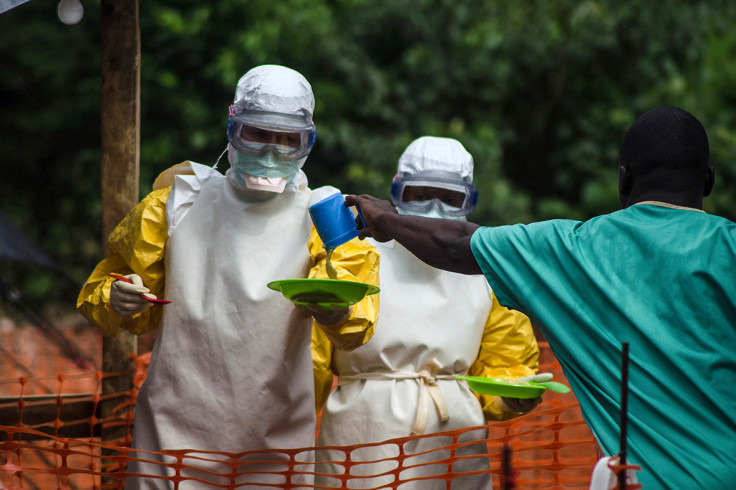Ebola Vaccines: Poor Market Potential and Lack of Subjects for Clinical Trials Holding Up Testing

Four vaccines being developed in the US against the Ebola virus are stuck in various stages and for various reasons, money being the most prominent one.
The most promising one is stuck in safety testing for the simple reason there is no money for a vaccine that has no market. Most big pharmaceuticals do not like to sink assets into developing any drug with low potential. That leaves the playing ground largely to the government and small, niche companies.
"I don't see why anybody except the U.S. government would get involved in developing these kinds of countermeasures," said Dr Sina Bavari of the US Army Medical Research Institute of Infectious Diseases (USAMRIID) in Frederick, Maryland. "There is no market in it."
As nations across the world step up vigil at airports and entry points, Ebola has claimed the life of yet another doctor, this time in Sierra Leone. Dr Sheik Humarr Khan was overseeing Ebola treatment at Kenema Government Hospital, about 185 miles east of Sierra Leone's capital city, Freetown.
Ebola virus has infected more than 1,200 people and killed close to 700 so far. While the doctor who led the fight against the virus died earlier on, two American charity members, including a doctor, are being treated for Ebola and said to be deteriorating.
Ebola has claimed the life of another doctor, this time in Sierra Leone.
The fatality rate of the current outbreak is around 60%. Patients can survive under proper care. However, all that patients are getting as treatment are painkillers and liquid replacements to tackle dehydration, besides antibiotics for secondary infections.
There is no cure for Ebola, not unless the vaccines proceed further in human testing.
Money is not the only hurdle in vaccine development. Taking the vaccine from animal testing to humans is a big leap. It is difficult to find enough people at high risk to test it, unlike a common flu or HIV.
"There are at least four vaccines that can protect against Ebola (in monkeys)," says Dr Thomas Geisbert, whose lab at the University of Texas Medical Branch is working on some of them. "But how do you take this to the next level?"
Drugs have been grown on genetically engineered tobacco. Called MB-003, it provided 100% protection to monkeys when given right after exposure to the virus, and helped even after symptoms developed.
Vaccines using a virus called vesicular stomatitis have been genetically engineered to resemble Ebola and have worked well in monkeys. Scientists are confident about its efficacy but as it uses a "live" virus, there are the safety concerns.
There have also been vaccines using virus-like particles, an approach that's worked against other diseases. But again, testing has not yet been done in people.
A drug being tested for influenza, favipiravir or T-705 has shown that it may be effective against Ebola in mice. The USAMRIID is currently testing it against monkeys, animals whose response to Ebola infections is much closer to humans than that of mice.
The lab is also testing a drug called BCX4430 in animals. A small biotech company called BioCryst is working with USAMRIID to develop that one.
Experts are however divided on the question of using experimental drugs during an outbreak of the disease. Some believe that the vaccines should be used on lab and health workers on the front line of the battle against Ebola. Others do not like to take chances.
Hopefully, the current outbreak will give the desired impetus to drug research in the area.
© Copyright IBTimes 2024. All rights reserved.






